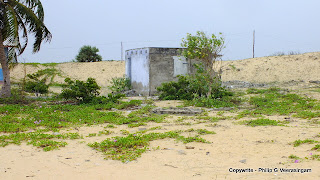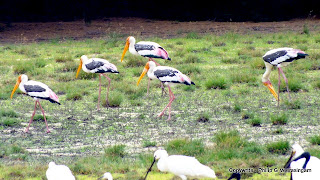 |
| A fresh-water collection among the sand dunes. |
 |
| An Open-Bill contemplating the camera-man. |
 |
| Collections of birds feeding in a pond. |
Time has stood still among these shifting sands. The birds in their variety come to feed, build their nests and breed. They raise up their young and depart. They are the wanderers but return home every year. What a contrast they are to humans, ever in search of better pastures. The latter hardly seem to realize that your home is where your heart is.
To watch a video of some bird life click on the web-link below:-
http://www.youtube.com/watch?v=Ben1xU2fU-A


























